Twilight Crime
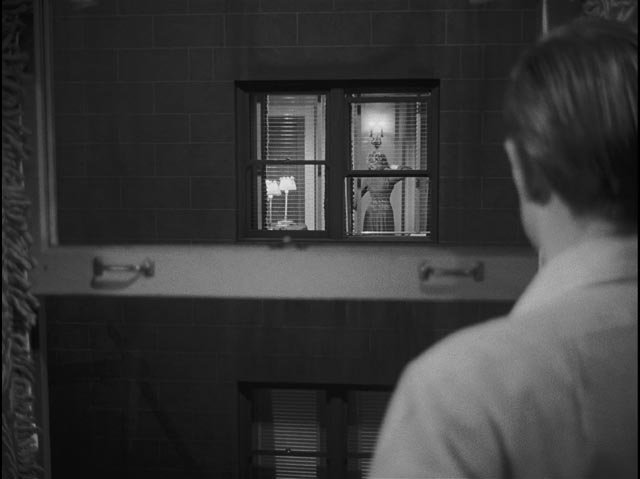
My latest shipment of Twilight Time Blu-rays, dealing with various criminal activities, has provided a very satisfying binge experience.
Don’t Bother to Knock (Roy Ward Baker, 1952)
Having made six features in England in just four years, Roy Ward Baker (then credited as Roy Baker) went to the U.S. where he made three movies in two years before returning to England. The best known of these is probably Inferno (1953), a noirish story about a rich bastard left to die in the desert by his wife and her lover. Shot in 3D, it’s one of the high points of the first brief flourishing of the format.
But the first of these three American movies is interesting for a very particular reason. It was the first movie in which Marilyn Monroe had a lead role, after several years of gaining notice in bit parts and supporting roles. Don’t Bother to Knock (1952) is a small film; based on a novel by Charlotte Armstrong, it seems like a filmed play, all the action taking place in a hotel room and the bar downstairs. 20th Century Fox head Darryl F. Zanuck used the project as a low-risk test of Monroe’s skills in a lead dramatic role and she acquits herself very well.
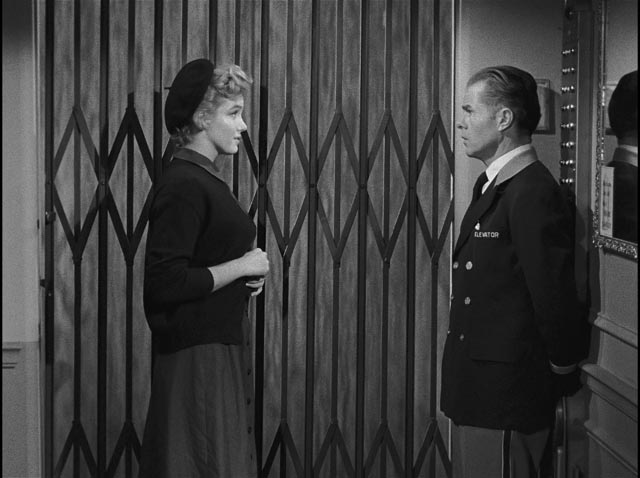
She plays Nell Forbes, a young woman newly arrived in the big city. Her uncle Eddie (the great Elisha Cook Jr.), elevator man at a big hotel, has landed her a job as an in-house babysitter for a couple with a young daughter, in town for a convention. But there are early hints that Nell has a dark secret and, as events unfold, it becomes clear that she has serious mental problems. Monroe throws herself into the part (though apparently she was a nightmare to work with on set, unreliable, failing to show up) and the vulnerability of her damaged character combines with her sensuality to unsettling effect.
The story revolves around her interactions with Jed Towers (Richard Widmark), a man staying in the room across the air shaft from where she’s watching over Bunny Jones (Donna Corcoran), the daughter of hotel guests Ruth and Peter Jones (Lurene Tuttle and Jim Backus). Jed has just had a falling out with sometime girlfriend Lynn Lesley (20-year-old Anne Bancroft), a lounge singer working in the hotel bar. As Jed invites himself over to what he thinks is Nell’s room, the in-house sound system pipes Lynn’s voice into the room as a reminder of his betrayal.
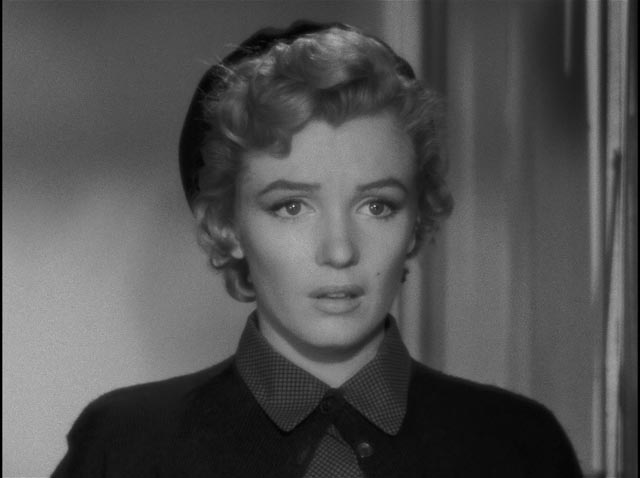
Nell becomes increasingly disconnected from reality and it seems that she’s potentially violent; she was recently released from a mental hospital where she’d been under treatment for several years because she has been unable to come to terms with the death of her fiance. She confuses Jed with the dead man, and sees the presence of Bunny as a threat to their reunion …
Widmark is his usual sturdy self, here obviously committed to providing support for Monroe rather than playing the star. The supporting cast is excellent and Baker maintains tension throughout the short feature (it runs only 76 minutes), but it’s Monroe who holds the viewer’s attention, skillfully maintaining a balance between vulnerability and threat while evoking sympathy for the broken Nell.
Although shot in tight quarters, Lucien Ballard’s black-and-white camerawork doesn’t feel cramped or static; the film has a brooding, noirish atmosphere. The image on the Blu-ray is brighter than on an earlier DVD edition, but is still quite moody.
Extras on the disk are two episodes of A&E’s Biography, one on Monroe, the other on Widmark.
*
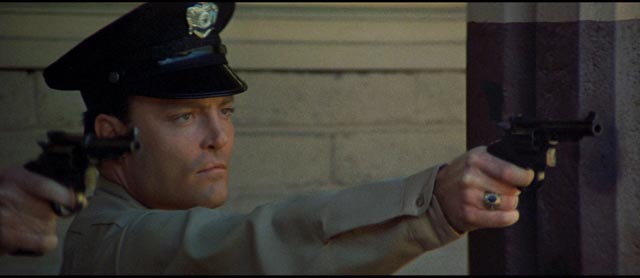
The New Centurions (Richard Fleischer, 1972)
Richard Flesicher was not an auteur; he was a reliable director much of whose work shows a genuine commitment to the material he was working with and an attention to craft in service of that material. But, being a director for hire, his filmography contains a fair number of movies which may not have been worth the bother. No doubt his disinterest in exercising a “creative ego” appealed to strong producers who were more interested in having someone manage the logistics of big productions, and more often than not he served these well – 20,000 Leagues Under the Sea for Disney (1954), Tora! Tora! Tora! (1970) for Darryl F. Zanuck, even Doctor Dolittle (1967) for Arthur P. Jacobs, which I was surprised to discover last year is a really well-made large-scale “family” musical despite the negative greeting it received on its initial release.
In the 1950s, Fleischer made several fine crime noir movies (Trapped [1949], Armored Car Robbery [1950], The Narrow Margin [1952], Violent Saturday [1955]); later, he went on to do several true-crime movies (The Girl in the Red Velvet Swing [1955], Compulsion [1959], The Boston Strangler [1968], 10 Rillington Place [1971]), which constitute some of his best work. The ’70s saw some of his most varied work, from thrillers (See No Evil, 1971), mob story (The Don Is Dead, 1973), science fiction (Soylent Green, also 1973), western (The Spikes Gang, 1974), a problematic colonialist adventure (Ashanti, 1979), and his most misunderstood movie, Mandingo (1975), which also happens to be one of his best.
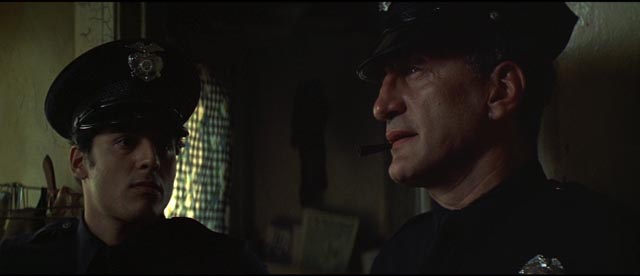
He began the decade with a movie which approached crime from an angle different from most of his work. The New Centurions (1972) was based on the first novel by Joseph Wambaugh, an active member of the Los Angeles Police Department. The book was a bestseller, giving a realistic view of the day-to-day lives of police officers rather than focusing on typical thriller/mystery plot elements. Although the film seems somewhat dated and overly familiar now, that’s largely because its influence subsequently permeated popular culture, inspiring television series like Hill Street Blues (1981-87) and NYPD Blue (1993-2005), and perhaps even Barney Miller (1974-82).
Adapted by the prolific Stirling Silliphant, The New Centurions is a rambling, episodic narrative which follows several recruits from police academy graduation through several years working on the streets of L.A., including Scott Wilson as Gus, Erik Estrada as Sergio, and most prominently Stacy Keach as Roy. Roy’s original plan is to move on to law school after getting some experience, but under the mentorship of veteran cop Kilvinski (George C. Scott), he comes to love working the streets, eventually alienating his wife (Jane Alexander), who fears for his safety after he’s almost killed during a robbery. Marital strife and the pain of recovering from a shotgun blast to the belly push Roy into alcoholism, while Kilvinski retires and spirals into depression. The movie piles on the tragedy (Kilvinski commits suicide; Roy dies when intervening in a domestic dispute), but it does capture something of the flavour of these men’s commitment to their work.
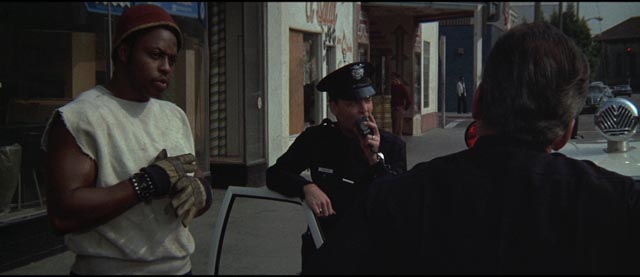
However, it really feels as if it has been cut down from a much longer movie, with jumps in time and abrupt changes in the characters from scene to scene. Although performances are good and Fleischer handles individual scenes efficiently, the film overall feels ragged and rushed – problems which would later be overcome by episodic TV where there was more room to let things breathe.
The Twilight Time Blu-ray has two commentary tracks (Nick Redman with actor Scott Wilson, and film historians Lee Pfeiffer and Paul Scrabo). It’s frustrating to know that the British disk from Indicator has a 44-minute documentary about the making of the film by the always reliable Robert Fischer, which includes input from Stacy Keach and Joseph Wambaugh, but the Twilight Time disk is nonetheless an excellent package.
*
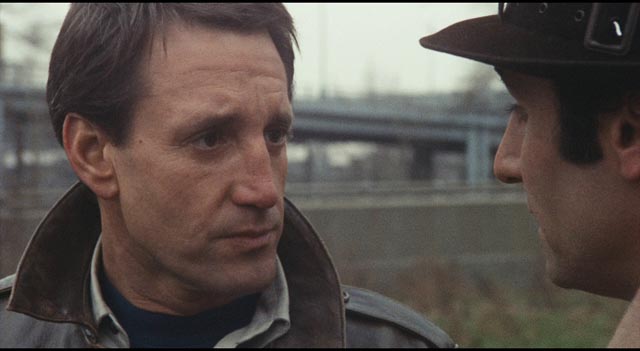
The Seven-Ups (Philip D’Antoni, 1973)
Producer Philip D’Antoni, after several years working in documentary television, hit it big with his first theatrical production – Bullitt (1968), directed by Peter Yates. Famous for its car chase in the streets of San Francisco, the cast and direction elevated a fairly routine thriller to box office success and a number of awards (mostly technical) and nominations. Three years later, D’Antoni had an even greater success with his second theatrical feature – The French Connection (1971), this time directed by William Friedkin. Unlike the fictional Bullitt, The French Connection was based on an actual case, and its main characters were slightly fictionalized versions of real New York City cops Eddie Egan and Sonny Grosso, who had cracked a big drug smuggling case.
The movie was harsh, gritty and profane, ramping up the impression of realism which was changing Hollywood at the time. Given its box office and awards success, it’s not surprising that D’Antoni returned to the same well for his own directing debut two years later. The Seven-Ups (1973) takes its title from the nickname of a small unit in the NYC police department known for handling crimes which draw sentences of seven or more years for those convicted. Like Popeye Doyle in The French Connection, these cops push the envelope of legality in their pursuit of mobsters and drug dealers. Typical of the ’70s, the good guys are barely distinguishable from the bad guys and the movie is steeped in moral ambiguities.
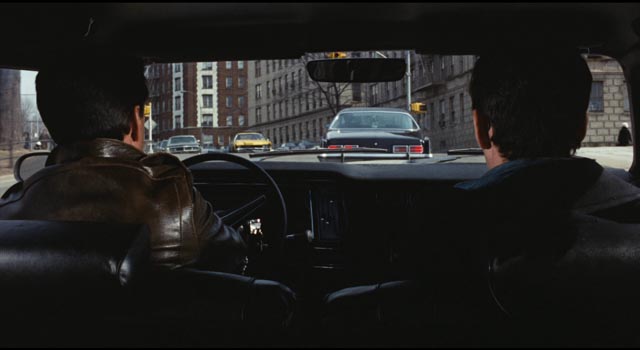
Roy Scheider as Buddy is the head of the unit, and he gets regular tips from shady childhood friend Vito (Tony Lo Bianco), who turns out to be playing the cops and gangsters against each other. There are double crosses, a de rigueur car chase, betrayals, murders and a bit of revenge. The movie lacks the raw energy of The French Connection, but it inhabits the same world and D’Antoni (in his only directorial effort) manages to hold it together even when the script (by Alan Ruben and Alexander Jacobs) aims to keep events murky and uncertain. The supporting cast adds to the air of authenticity, with notable appearances by Richard Lynch, Joe Spinell and Bill Hickman.
The Blu-ray has more extras than usual for Twilight Time, starting with a commentary from film historian Richard Harland Smith. There are five featurettes dealing with the production – interviews with director D’Antoni and actor Lo Bianco, plus a couple detailing the shooting of the car chase, etc. There’s also a super-8 version of the movie, and a couple of galleries and trailers. These all add up to almost two hours of supplements.
It was shortly after writing this post that I learned of Philip D’Antoni’s death on April 15 at the age of 89.
*
The other two films in the package, the best of the bunch, fall chronologically between Don’t Bother to Knock and The New Centurions.
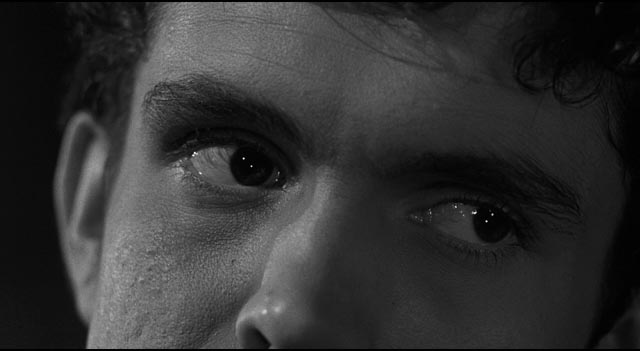
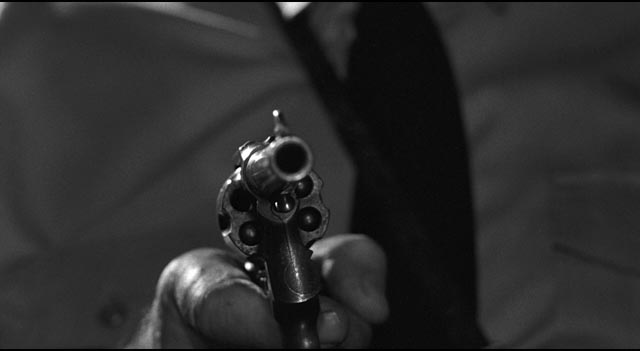
Underworld U.S.A. (Samuel Fuller, 1961)
I hadn’t previously seen Sam Fuller’s Underworld U.S.A. (1961), but it turns out to be one of his best, a lean, tightly focused story of personal obsession and moral ambiguity. When 14-year-old Tolly Devlin sees four men beat his father to death in a back alley, he rejects an offer of help from assistant DA Driscoll (Larry Gates) and swears to get personal revenge. The film follows Tolly’s single-minded determination, the angry boy transforming himself into a kind of self-willed sociopath. He gets into petty crime, eventually landing in prison as a young man (Cliff Robertson), where he makes himself a trusted inmate so that he can get work in the prison hospital in order to get close to the one killer he recognized in that back alley, Vic Farrar (Peter Brocco). Farrar is close to death and begging for forgiveness; Tolly uses this to get him to identify the other men involved in his father’s death, then calmly withholds his forgiveness so Farrar dies in distress.
On his release, Tolly manages to work his way into the city’s criminal underbelly, feigning respect and admiration for the bosses he intends to destroy. His apparent dedication plays to their vanity and exposes them to his plans … plans which involve drawing Driscoll, now a powerful crime commission head, into his revenge. Tolly skillfully manipulates both criminals and legal authorities, feeding information in both directions to sow distrust and push the gangsters into mutual self-destruction.
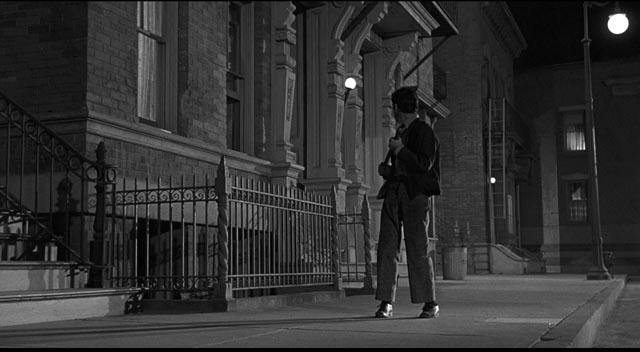
To counterbalance Tolly’s obsession, Fuller offers an alternative possibility for a normal life represented by his surrogate mother Sandy (Beatrice Kay) and Cuddles (Dolores Dorn), a young woman he saves from the gang. But all those years of anger and determination have twisted Tolly beyond the possibility of redemption and in the end he too is consumed by his need for revenge.
Underworld U.S.A. has all of Fuller’s tabloid strengths, with narrative and characters drawn in bold strokes, relying on the actors to provide nuance – Robertson gives one of his finest performances as an outwardly pleasant and unassuming man whose apparent charm disarms those on both sides of the law whom he’s using for his own purposes; only Sandy and Cuddles can see through the veneer and they despair for the consuming obsession that’s eating him from the inside. Larry Gates’ Driscoll is a decent man whose decency prevents him from seeing Tolly as he really is. Paul Dubov, Robert Emhardt and Gerald Milton are effectively unpleasant as the gang leaders, so certain of their own power that they can’t recognize how much smarter Tolly is than them.
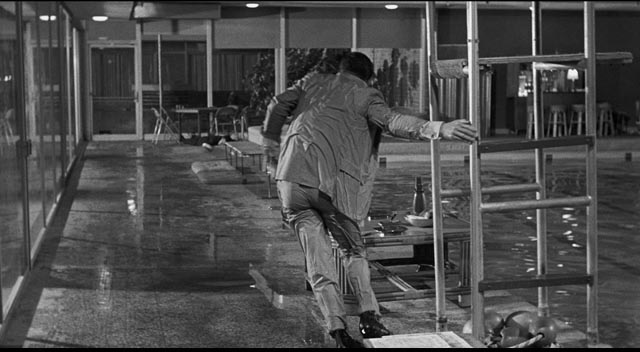
As in much of Fuller’s work, the vision of a society corrupt from top to bottom is delivered with conviction. The gangsters have permeated that society at all levels, their infiltration of politics and economics facilitated by the inherent vulnerabilities of capitalism and the self-defining American myth of individual achievement. Tolly is a product of that myth and he destroys the system from within.
The disk, which showcases an excellent transfer of Hal Mohr’s black-and-white cinematography, includes a brief introduction by Martin Scorsese and a 25-minute documentary about Fuller’s career previously available as part of Sony’s Sam Fuller DVD box set.
*
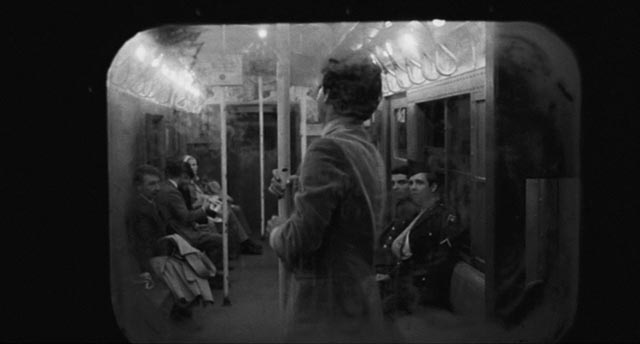
The Incident (Larry Peerce, 1967)
Larry Peerce had a long but not particularly notable career in television and movies, his work ranging from the Batman TV show (1966) to the mediocre all-star sniper thriller Two-Minute Warning (1976), from the Elizabeth Taylor plastic surgery melodrama Ash Wednesday (1973) to the sentimental true-life story of crippled skier Jill Kinmont in The Other Side of the Mountain (1975) and its sequel (1978), from One Potato, Two Potato (1964), an early treatment of interracial marriage, to a pair of minor but respectable literary adaptations, Philip Roth’s Goodbye, Columbus (1969) and John Knowles’ A Separate Peace (1972). But of his work that I’ve personally seen, the best is a small, tense, low-budget movie from 1967 called The Incident, which Twilight Time has given a decent release on Blu-ray. (It’s almost thirty years since its last appearance on home video, on laserdisk.)
While the script by Nicholas E. Baehr, adapted from his own TV play Ride With Terror (1963), is perhaps overly schematic and depends on character types rather than fully realized characters, The Incident is a tense, claustrophobic drama of urban paranoia predicated on what was theorized in the ’60s as the “bystander effect”, the idea that people are more likely to hold back in threatening situations in direct proportion to how many other people are present. This theory suggests that a sense of responsibility gets diluted by the presence of others, thereby allowing very bad things to happen.
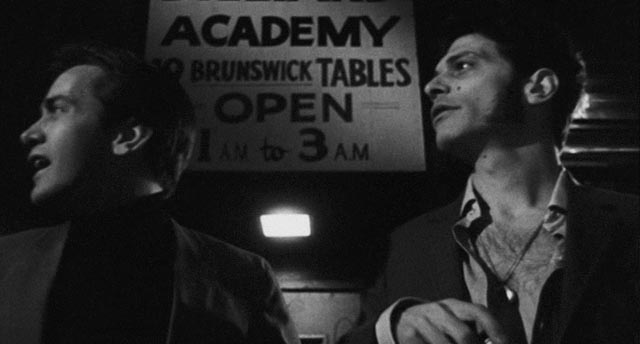
The theory was largely a result of reporting about the murder of Kitty Genovese on a New York City street in 1964 which asserted that dozens of people had witnessed the killing and done nothing about it, either simply watching or turning away. That reporting was eventually exposed as deeply flawed (it wasn’t clear at the time that a murder was actually being committed; calls were made to the police, but were ignored because of the belief that it was “simply a domestic dispute”, in itself a disturbing fact), but not before a new and troubling urban myth had been embedded in the public consciousness: people who live in cities want nothing more than not to get involved. (Writer Baehr was somewhat prescient, having written his original television script the year before the Genovese murder.)
In The Incident, we are quickly introduced to two young thugs (debut performances from Martin Sheen and Tony Musante, both of whom had until then been working extensively in television) who roll a man in an alley using unnecessary violence for their own amusement, then head for the subway. A quick series of vignettes introduce a cross section of ordinary New Yorkers – bickering couples, young lovers, a black couple, an alcoholic desperate to stay off the bottle and get his job back, a homosexual, a pair of soldiers on leave and a drunk sleeping it off in a subway car. All of these people eventually end up sharing the same late night subway car, just wanting to get home; and then the two punks get on board and begin to amuse themselves by harassing everyone.
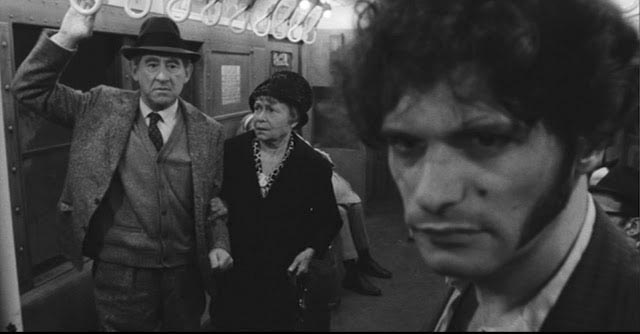
With the action now limited to the subway car, the film quickly builds a clammy tension. The passengers initially try to make themselves as invisible as possible to the punks, turning away as others are tormented … if something becomes intolerable and someone speaks up, they immediately find themselves the new target. Vulnerabilities are exposed and exploited (one of the punks quickly detects the homosexual’s secret and draws him out conspiratorially before viciously exposing him in front of the other passengers). The punks prevent anyone getting off at any stops and don’t let anyone else on; this captive group is held for their own personal entertainment, the pressure they apply building to the limits of tolerance until an inevitable explosion of violence.
That violence comes as a Death Wish-type relief for the audience, but it doesn’t let the characters off the hook for their passivity in the face of the abuse inflicted by the punks on their fellow passengers. Although the script and direction overstate the theme, there’s no denying the visceral power of the film, thanks in large part to an excellent cast and the raw, documentary-like cinematography of Gerald Hirschfeld. His gritty black-and-white work here is quite different from his conventional work on Sidney Lumet’s Fail-Safe (1964) and his lushly expressionist work on Mel Brooks’ Young Frankenstein (1974), its ragged quality obviously a deliberate creative choice to add a level of realism to the film.
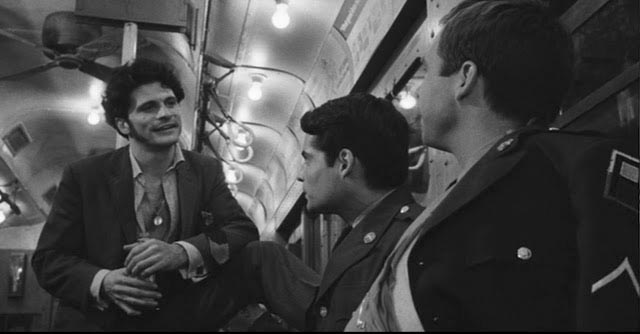
Right at the end, there’s one final chilling grace note: after the train has stopped and the authorities have been summoned, a pair of cops rush into the car and without bothering to ascertain what has actually happened immediately move to “subdue” the black passenger, assuming that among this diverse group, he alone must be the criminal.
The disk includes a commentary track with director Larry Peerce in conversation with Nick Redman which provides a lot of background information about the production.
Comments
Boy, the seventies were good times for cop movies! I remember taking my little brother (10) to see the French Connection. I was 12. We got home afterward and were regurgitating lines from the movie at dinner. “Do you pick your feet in Poughkeepsie? I bet you do. I bet you pick your feet in Poughkeepsie.” I had no idea what it meant. The Seven Ups was one of our favourites from the time… good car chase, lots of violence. I was always taking my little brother to these kinds of movies. We’d tell our parents we were off to see Bedknobs and Broomsticks or Willy Wonka and instead go to see whatever was most adult-rated that we could still get into.
It was a Golden Age!
Fleischer’s Armoured Car Robbery is a favorite of mine. Such a nice tight story and it breezes right along.
Watched I Wake Up Screaming recently and liked that a lot.
I haven’t seen either in a while, but recall thinking that Kubrick may have borrowed a bit from Armored Car Robbery for the ending of The Killing.
Best thing about I Wake Up Screaming is the presence of the great Laird Cregar as the cop; he raises everything he’s in a notch or two.
That cop was one of the slimiest characters I’ve seen in a while.
Laird Cregar’s one of my favourite actors. If you haven’t seen them, you should check out Lubitsch’s Heaven Can Wait and his last two films directed by John Brahm, The Lodger and Hangover Square.
I just literally received The Lodger and Hangover Square from Amazon on May 26. It was the Fox Horror Classics set, The Undying Monster is the 3rd film in the series. I picked up set 2 at the local Half Price Books for 7 bucks but had to pay almost 3 times that for the first set from Amazon. I sure manage to find some good used stuff at those stores. I came home with 60 movies from one of them on Thursday. One of the items was a 50 movie pack from Mill Creek, Gunslinger Classics, which won’t live up to it’s name. Still it was under 8 bucks with the coupon discount and tax added. For 16 cents a movie I can toss that into the river if it disappoints.
I loved those Fox sets, particularly volume 2 with the three movies by John Brahm. It’s a pity they didn’t continue the series.
I’ve mostly avoided those big Mill Creek multi-movie sets because the quality is generally pretty wretched, though they occasionally include hard-to-find titles that tempt me.
The quality sure isn’t there but the quantity is, I must have 2 dozen of those 50 movie sets and most of them were used at 10 bucks or less. I have watched a good number of them so far, I used to blog about them but haven’t for a while. Gives me something to complain about. Most of the movies aren’t ones that are worth paying any money for, really.
PLEASE MAKE ARTICLES SHARABLE ON FACEBOOK
Copying the URL and pasting it in a FaceBook comment works…